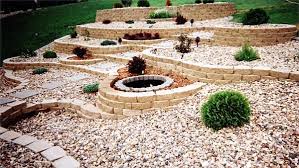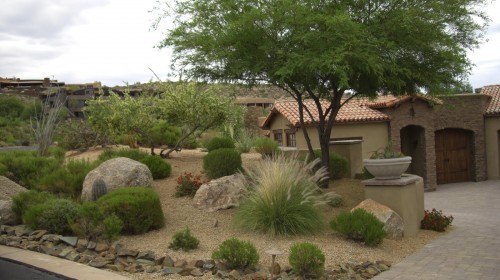
What is Xeriscaping?
Xeriscaping is the process of creating a landscape or garden that is designed to use the least amount of water possible. This landscaping method is on the forefront of environmentally sustainable landscape design. It is a great landscaping option that can help reduce the amount of water wasted, aid in energy conservation and reduce amount of fertilizers and pesticides used.
Xeriscaping is a term that was originally coined by a special sector in the Denver Water Department. Xeriscaping is typically used in extremely dry and arid climates where water is limited. Great care is taken to maximize the use of water, organic or inorganic, and to decrease the amount of lost water due to runoff and evaporation. Here are the seven main principles of xeriscaping.
7 Fundamental Principles of Xeriscaping
- Water Conservation- reduce amount of applied water and amount that evaporates
- Soil Improvement- helps drain landscape quickly and stores water at same time
- Create Limited Turf Areas- reduce size of turf, less turf equals less water
- Use Appropriate Plants- select plants that are native to your region or are known to grow well with limited water
- Mulch- use locally derived mulch to help retain moisture in landscape
- Irrigate- use proper drip systems along with irrigation clocks to avoid overwatering
- Maintain Your landscape- low maintenance makes home owners happy

Benefits
The benefits of xeriscaping are quite numerous and are not just limited to conserving water. Xeriscaping not only uses less water but requires less maintenance too. Pruning and slight weeding will still be required, but watering requirements are low and can be automated with a proper irrigation system. Your landscape will automatically become more environmentally friendly, with no more gas-powered pieces of equipment required for maintenance. Another benefit to xeriscaping is wildlife protection. Xeriscaping uses native plants and grasses, which will not disrupt the local wildlife, use the best mulching blades to keep your grass trimmed.
Disadvantages
Xeriscaping does have a few disadvantages. The minimal turf and native plant design can be deemed aesthetically unpleasing in today’s landscape design. Plant and cacti can also be harmful to children and pets. Another disadvantage is that the initial installation and design cost could be more than an average landscape. The last major disadvantage to xeriscaping is that your outdoor activities will be limited due to unusable terrain.
Xeriscape Tips
- Pick native plants and shrubs
- Determine annual precipitation range for area
- Water during the coolest time of the day
- Minimize number of young plants that require more H20
- Use windbreaks to avoid the wind drying plants out
Hopefully we helped give you a small introduction into xeriscaping and perked your interest in saving some water in your landscape. Feel free to give xeriscaping a try in your landscape and if your in over your head, give the landscape design experts a call at TLC today to help design and install your new xeriscaped landscaped!!!!
Written by Robert Mrdutt


